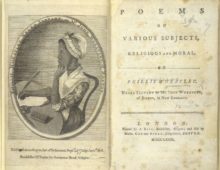Exploring Traditional vs. Contemporary Surface Pattern for ceramics, with Christ Church Academy and the Spode Museum
October 19, 2021 - Kate McNab in News & Blog Posts
Year 8 pupils from Christ Church Academy teamed up with the British Ceramics Biennial (BCB) and the Spode Museum, to explore and compare traditional techniques and contemporary, digital techniques for applying surface patterns to ceramics.
The school is a ‘Clay School’ – an initiative developed by The Clay Foundation to ensure that every local school child has experienced working with clay at least once in their lifetime.
See our guide to bringing the project into the classroom.
1. Inspiration
Students began by exploring different ceramics in the Revolutionary Collection and finding out more about the period – particularly the impact of the Industrial revolution on the ceramics industry, and how ceramic design and surface patterns were used as part of political and social justice campaigns of the time, such as the campaign to abolish transatlantic slavery:
- Chamber pot with Napoleon’s head
- Anti-slavery sugar bowl
- Wedgewood abolitionist plaque
- ‘No Stamp Act’ teapot

Student sketch book
They also researched the rich history of ceramics in their local area in Staffordshire.
Students visited the Spode Museum in Stoke-on-Trent, where they researched the company’s history, its contribution to the pottery industry and how Spode became ‘one of the greatest names of the industrial revolution’. This included what is perhaps Spode’s most recognisable product, the Blue Willow Plate, and the Willow pattern.
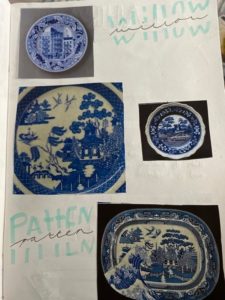

They also took part in the BCB festival, which showcased a wide variety of ceramics, techniques and different ceramics artists, as well as providing insights into the future of the ceramics industry.

Ceramicist Paul Scott’s blue and white Cumbrian blue teaware (made by Spode for Fortnum and Mason) provided strong contemporary links with the traditional willow patterns and surface pattern design techniques, while Laura Plant’s work enabled students to explore digital surface design.
Students were encouraged to keep a sketch book documenting their research, ideas and outcomes throughout the project.
2. Experimenting and creating
The students planned out a surface design, on a paper plate, which acted as a focus for their project. They kept this in mind while exploring and sampling different traditional and contemporary surface pattern techniques, considering the pros and cons of each technique.
Copper plate printing (Traditional)
During their visit to the Spode Museum, students tried two traditional surface pattern techniques: underglaze copper plate printing – onto ceramic discs

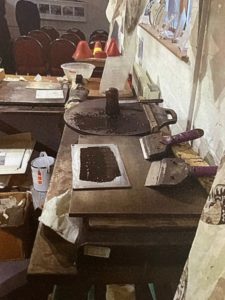
Sprigging (Traditional)
They also explored sprig mould decoration – or ‘sprigging’ – creating a 3D surface pattern using moulds.

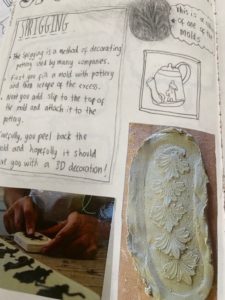


Digital designs and litho-decorating (Contemporary)
The students also undertook a workshop at school with Laura Plant, which took place over two days and explored both digital and traditional techniques. First they created a digital design – Photoshop, 3D Paint and ProCreate are all useful software for this. These were sent off to a specialist company (Fotoceramic) to be printed as decals (a special transfer for ceramic surface patterns). The students applied these by hand to chinaware plates which were then fired in the school kiln.
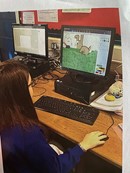

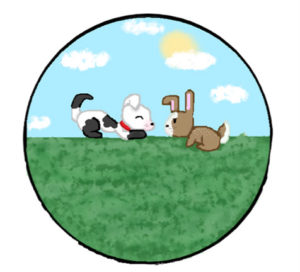
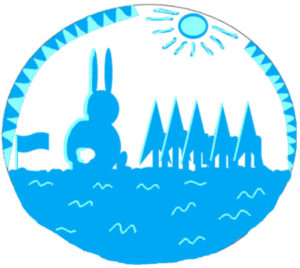
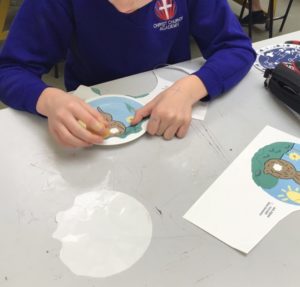
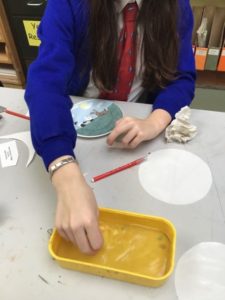
Sgrafitto (Traditional)
They then created a similar design using the traditional technique of Sgraffito – the process of scraping into ceramics after a coloured slip has been applied and left to dry a little.
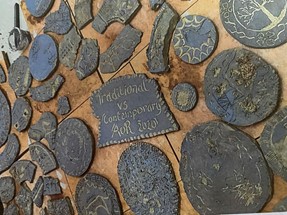

Sponge printing (Traditional and Contemporary)
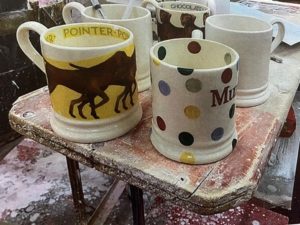
Mugs from the Emma Bridgewater factory
The Students visited the Emma Bridgewater factory in Stoke-on-Trent, to explore the history of the factory and how the pottery is made – including sponge print surface design. After the factory tour, the students went into the decorating studio to decorate their own plate using cut sponge designs.

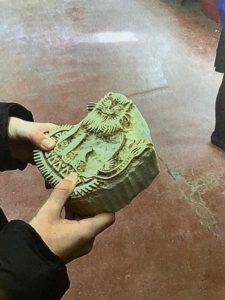
Printing blocks from the Emma Bridgewater factory

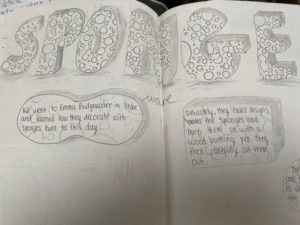


Students’ sponge-print designs
3. Evaluating and sharing
To round the project off, the students discussed their experiences and findings, comparing the processes they had experienced and explored and their pros and cons. Each student’s opinion was valid, as an artist in their own right. Lots of them had particularly enjoyed using digital techniques, but also recognized the significance of traditional techniques and of keeping these ‘irreplaceable’ processes alive.
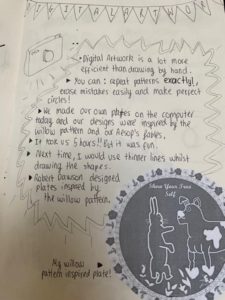

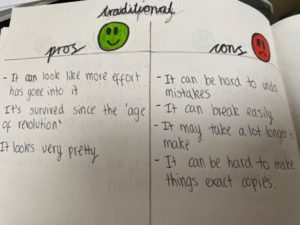
The project resulted in a number of practical outcomes being produced, including two decorated plates, clay tiles, printed disks and sketchbook records of students’ explorations. Christ Church Academy had planned to share their project as part of the 250th anniversary celebrations at Spode. Unfortunately this was not possible due to the impact of COVID restrictions. They still plan to exhibit the students’ work when the time is right.


